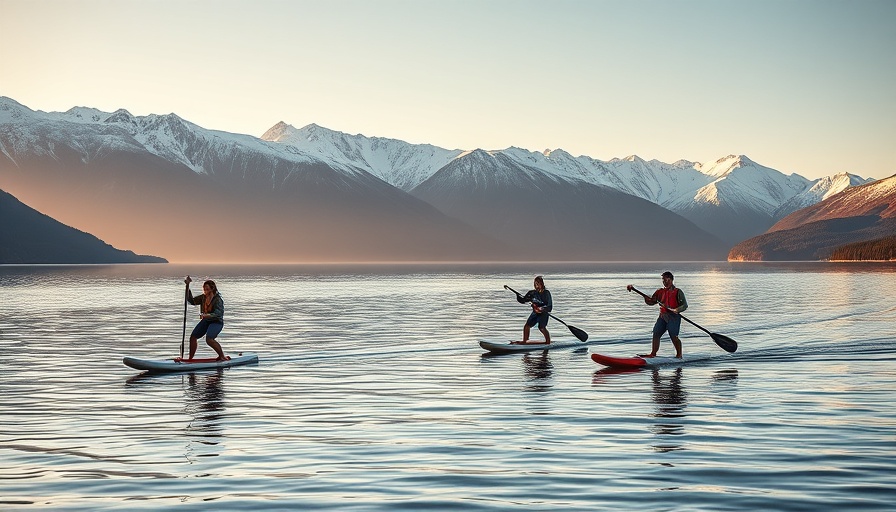
Making Waves: The Impact of Switzerland's SUP Campaign
In recent years, the Swiss stand-up paddling (SUP) community has embarked on a groundbreaking initiative aimed at fostering respect for nature while enjoying the beauty of its lakes. The campaign, aptly named "Respect on the Water," is focused on educating paddlers about responsible practices that protect the delicate ecosystems thriving in and around some of Switzerland's most cherished waterways. Launched in 2021, this initiative highlights the balance between passion for adventure and the need for environmental stewardship.
Sustained Awareness Leads to Notable Change
Backed by the research from the Swiss Federal Institute for Forest, Snow and Landscape Research (WSL), the campaign has shown promising results so far. By 2024, awareness of the initiative had reached 36% among paddlers on Lake Greifensee, a testament to the campaign's efforts. It’s encouraging to see that those who were informed about the campaign were more likely to engage in eco-friendly paddling practices, such as maintaining a safe distance from sensitive habitats and steering clear of protected areas. These findings reinforce the idea that awareness correlates directly to respectful behavior on the water.
Gaps and Opportunities: Reaching New Paddlers
While the campaign has accomplished significant outreach, there remains work to be done—especially in connecting with newer paddlers. The reliance on printed materials, including posters and flyers, has been helpful; however, WSL researchers found a troubling gap in digital outreach. Many SUP users have reported minimal interactions with the campaign online. To address this, WSL suggests harnessing the power of social media influencers and collaborating with retailers to provide more educational resources right at the point of sale. Furthermore, by engaging communities of paddlers, the campaign can amplify its message and maximize its reach.
A Model for Sustainable Recreation
The Swiss campaign is a noteworthy example of how proactive education can foster a sense of responsibility among recreational users without imposing strict regulations. It encourages paddlers to embrace sustainable practices, proving that enjoying nature and conserving it can go hand in hand. As recreational activities on lakes continue to grow, this forward-thinking approach will be crucial to safeguarding sensitive ecosystems.
Embracing the Future: Trends in Outdoor Recreation
Looking towards the future, there’s a clear trend of increased outdoor activity as more individuals seek connection with nature through sports like SUP. This is heightened by the ongoing global emphasis on sustainable living. As demand for sustainable recreational practices rises, initiatives like the "Respect on the Water" campaign can serve as models for other regions and outdoor activities. Combining passion for nature with actionable insights encourages a community that thrives on both adventure and preserving our planet.
Empowering a Community of Responsibility
Paddlers are more than just enthusiasts; they are crucial stewards of the environment. By spreading awareness and promoting responsible practices, this campaign offers something valuable to every SUP user. Each time a paddler navigates the waters with respect, they contribute to the larger goal of protecting natural habitats. It’s a profound reminder that through simple actions, each of us can play a role in environmental preservation.
To all paddlers out there: let us strive to uphold the values of education and responsibility as we adventure on our beautiful lakes. Together, we can ensure that these cherished environments are preserved for future generations to admire and enjoy. Let’s paddle with purpose!
 Add Row
Add Row  Add
Add 




Write A Comment